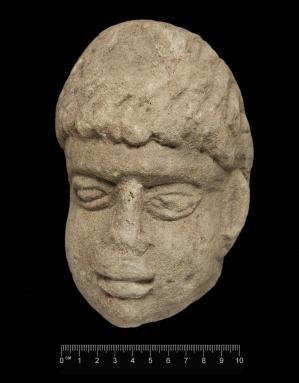Carved Head Of Roman God Found In Ancient Rubbish Dump

An archaeology student unearthed an 1,800-year-old carved stone head thought to represent a Roman god.
The artefact was found in an ancient rubbish dump at Binchester Roman Fort, near Bishop Auckland, in County Durham, England. Known to the Romans as ‘Vinovia’, the fort was set up in the late 1st century AD and was once the largest Roman fort in the area. A student at Durham University, Alex Kirton, discovered the sandstone head during a dig in buried late Roman rubbish inside what was likely a bathhouse. The head measures approximately 8 inches (20 cm) by 4 inches (10 cm) and dates to the 2nd or 3rd century AD. Experts suggest it depicts the deity Antenociticus, who is believed to have been worshipped as a source of inspiration and intercession in military affairs.
Lecturer in archaeology at Durham University Dr. David Petts said: “We found the Binchester head close to where a small Roman altar was found two years ago. We think it may have been associated with a small shrine in the bathhouse and dumped after the building fell out of use, probably in the 4th century AD."
“It is probably the head of a Roman god," Dr. Petts explained. "We can’t be sure of his name, but it does have similarities to the head of Antenociticus found at Benwell [in Newcastle upon Tyne] in the 19th century. We may never know the true identity of this new head, but... Antenociticus is one of a number of gods known only from the northern frontier, a region which seems to have had a number of its own deities. It’s also an excellent insight into the life and beliefs of the civilians living close to the Roman fort. The style is a combination of classical Roman art and more regional Romano-British traditions. It shows the population of the settlement taking classical artistic traditions and making them their own.”
The stone head is African in appearance and Dr. Petts said experts are unsure whether these features were deliberate: “This is something we need to consider deeply. If it is an image of an African, it could be extremely important, although this identification is not certain.”
He added: “The African style comparison may be misleading as the form is typical of that produced by local craftsmen in the frontier region.”
Topic:Culture Ancient Rome Archaeology
You may also be interested in...
Latest property in Italy
370 m²
7 Bedrooms
279000
66 m²
2 Bedrooms
179000
210 m²
4 Bedrooms
135000
270 m²
4 Bedrooms
0
170 m²
2 Bedrooms
45000












